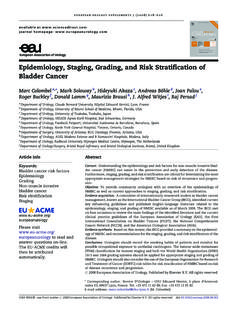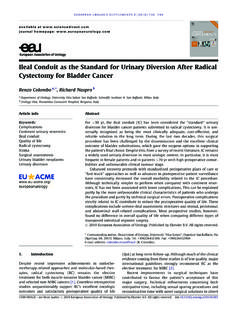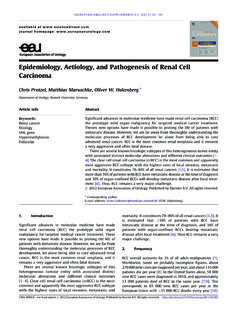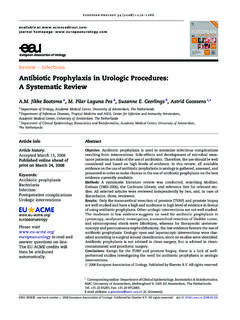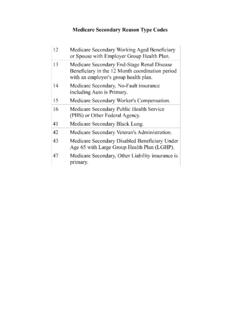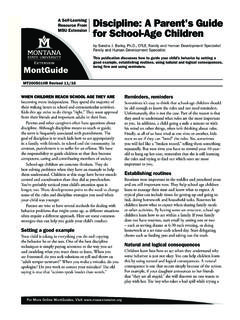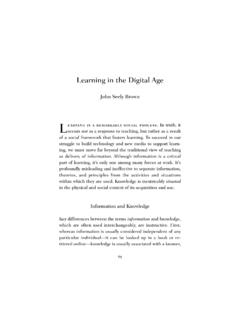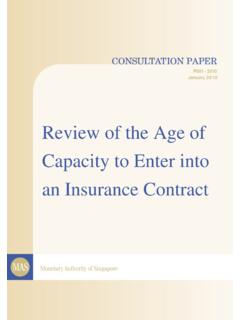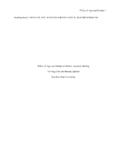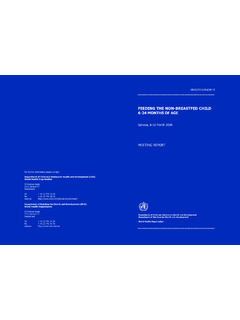Transcription of Age-Specific Reference Ranges for Prostate-Specific ...
1 Age-Specific Reference Ranges for Prostate-Specific antigen asa Marker for prostate CancerHans-Joachim Luboldt*, Joachim F. Schindler, Herbert Ru bbenUniversita tsklinikum, Klinik fu r Urologie, Hufeland 55, 45122 Essen, the introduction of PSA testing for prostatecancer screening there has been realized a down-ward shift from advanced incurable cancer toorgan-confined disease. Nonetheless, the diagnosticusefulness of serum PSA especially in mass screen-ing is a matter of debate. For it has been recognizedsince the early 1990s the PSA test produces up to 70%false positive results peaking in men beyond theirfifth decade of age[1].
2 Moreover, data fromthe European randomized study of screening foreau-ebu update series 5 (2007) 38 48available at homepage: infoKeywords: prostate cancerPSAAge- specific referenceranges for PSAE arly detectionProstate biopsyAbstractMore than a decade ago, several investigators found serum PSA levels incancer-free men to correlate directly with age and prostatic volume. Thisprovided the basis for the establishment of Age-Specific Reference rangesfor PSA constituting an attempt to improve sensitivity and specificity ofserum PSA as a marker for prostate cancer.
3 Differing Age-Specific refer-ence Ranges for PSA were established in whites, African Americans,Asians, and Orientals. Moreover, since the introduction of differentmolecular forms of PSA with the inherent capability to differentiatebetween benign and malignant disease, Age-Specific Reference rangesfor free and complexed PSA have also been established. Subsequentstudies sought to evaluate whether the standard ng/ml cutoff shouldbe replaced by age-adjusted cutoffs. Multiple trials involving various testmodalities yielded inconclusive results. More recently, attempts weremade to integrate principles of PSA density and PSA velocity into con-cepts of age-adjusted cutoffs for PSA envisioning more sensitive andspecific PSA driven screening regimens.
4 Hypothetical approaches invol-ving age in association with prostatic growth or longitudinal data of PSAchanges in individual men await further evaluation in prospective clin-ical trials. In conclusion, the usefulness of Age-Specific PSA rangesremains controversial because of concerns that the use of age-adjustedcutoffs for counselling men to undergo prostate biopsy runs the risk ofmissing a high proportion of clinically significant cancers in older menand augments the rate of unnecessary biopsies in younger men.#2006 European Association of Urology and European Board of by Elsevier All rights reserved.
5 * Corresponding author. Klinikpraxis fur Urologie, Wallstr. 34, 46535 Dinslaken, +49 2064 58848; Fax: +49 2064 Luboldt).1871-2592/$ see front matter#2006 European Association of Urology and European Board of by Elsevier All rights cancer (ERSPC) indicate that the positivepredictive value of PSA as a screening test isdiscontenting 30%[2]. Other investigators reportedonly 17% positive predictive value for PSA alone andan increase to 51% when applied in combinationwith digital rectal examination (DRE) result[3].As an organ- specific and not a carcinoma-specificmarker, serum PSA may be elevated due to a numberof factors such as hyperplastic growth of prostatictissues, inflammation, prostatic manipulation, urin-ary retention, sexual activity, and, hypothetically,the presence of undetectable clinically insignificantfoci of cancer[4].
6 In addition, more leaky prostateswith regard to PSA have been postulated for oldermen. In response to the lack of sensitivity andspecificity, several approaches were tested by theircapability to distinguish between benign and malig-nant prostate . Of these, the concepts of PSA velocityand PSA density, the latter being intricately inter-woven with PSA changes related to age, have beenextensively studied. One major concept to enhancethe discriminatory power of the PSA test is theestablishment of Age-Specific Reference rangesinstead of a single Reference of sufficient sensitivity and specificityby using a single Reference range from 0 to 4 ng/mlfor PSA driven detection of early stage prostatecancerThe ideal threshold value for recommendation ofprostate biopsy depends on the tradeoffs betweenfalse positive and false negative results.
7 Tradition-ally, a single demarcation between normal andelevated PSA values, ng/ml, has been used as anindication for biopsy among men of all to the findings of an early detection studyof 6,630 men, Catalona et al.[5]stated the use of totalPSA (tPSA) greater than ng/ml as a threshold inconjunction with DRE for recommending prostatebiopsy to be little less than optimal for all age variance with this opinion, more recent dataprovide evidence of the exclusion of an unaccep-tably high number of patients with clinicallysignificant organ-confined cancer, when a singlereference range is applied indiscriminately.
8 Inci-dental findings from the prostate Cancer PreventionTrial (PCPT) study[6]as well as data thereof incombination with data of the National Health andNutrition Examination Survey 2001 2002 (NHANES2001 2002)[7]revealed that a large number ofprevalent cases of biopsy detectable prostate cancerexists in American men with a normal PSA valueless than standard Reference range of to ng/mlfor PSA does not compensate for age-related volumechanges in the prostate primarily due to hyperplas-tic growth of prostatic tissue. For this reason, it wassuggested to use Age-Specific PSA Reference Ranges ,which were to be more sensitive in younger men andmore specific in older men.
9 That is, first, when thethreshold of ng/ml is lowered for younger men,the improved sensitivity was to result in the earlydetection of more curable, organ-confined , Age-Specific PSA Reference rages were toimprove the specificity of the PSA test by raising thePSA threshold for normal among older population-based age-specificreference Ranges of PSAE stablishing Age-Specific Ranges for serum PSA inorder to define age-adjusted minimum thresholdsfor performing prostate biopsies was suggested tohave the advantage of increasing the sensitivity (theprobability of the test being positive when thepatient is affected with prostate cancer)
10 Of PSAtesting in younger men as well as enhancing itsspecificity (the probability that negative test indi-cates that the patient does not have prostate cancer)in older men, resulting in the increased detection ofcurable early stage cancers in the younger malepopulation and decreasing the overdetection andprobably overtreatment of clinically insignificantcancers in older men[8]. Age-Specific tPSA Ranges in populations consistingpredominantly of white menOesterling et al.[8]were among the first who set outto establish Age-Specific normalized serum PSAvalues.

